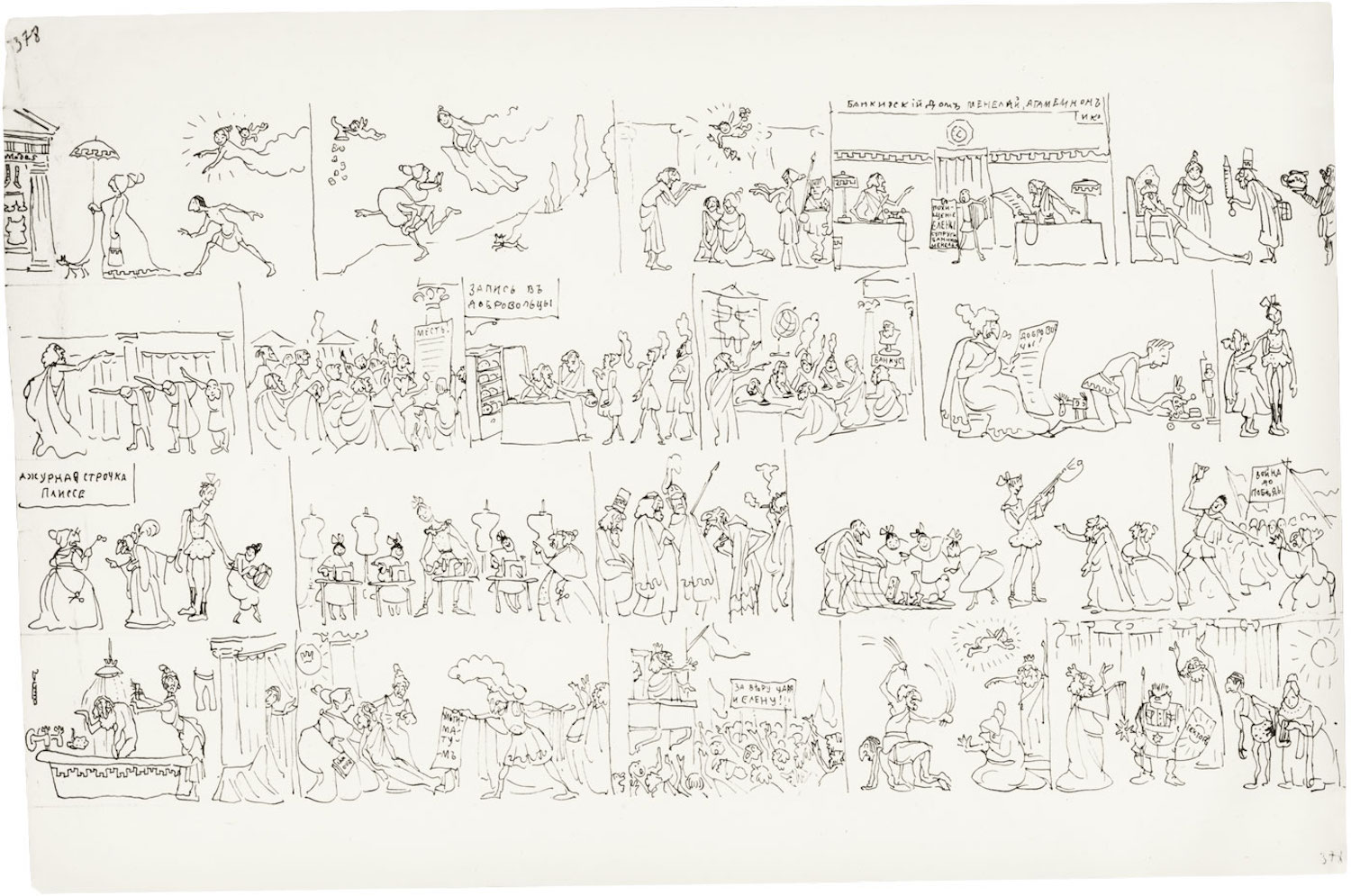Sergei Eisenstein is well-known as one of the greatest filmmakers, whose works include the three film classics: Battleship Potemkin (1925), Alexander Nevsky (1938), and Ivan the Terrible (release in two parts in 1944 and 1958). Few people know about Eisenstein’s graphic works that show a sphere of his creativity and artistic freedom.
Eisenstein on Paper, Graphic Works by the Master of Film is a book that collects Eisenstein’s graphic works during his life, including some short text about each period and its relation with Eisenstein’s own essays and diary entries.
In 1930, Eisenstein traveled to the United States and then Mexico. He produced hundreds of drawings influenced by ancient and contemporary Mexican art. In 1932, Eisenstein was forced to return to Russia under the Communist government. At that time, he was struggling to make further films without political interference. Eisenstein then turned again to sketching, expressing his artistic freedom. He remained producing drawings of characters, caricatures, erotic fantasies, costumes, stage designs and more, until his death at the age of 50.

Courtesy of Artist. https://www.calvertjournal.com/
One of Eisenstein’s drawings is what we would call comics. The comics show Eisenstein’s skill to create visual humor in linear reading form. This skill was very useful in his attempt to make silent films. His comics are rather a sequence of pictures that tells a story, than a combination of graphics and words like in popular comics.

Courtesy of Artist. https://www.calvertjournal.com/
Courtesy of Artist. https://www.calvertjournal.com/
In 1920, Eisenstein moved to Moscow from Petrograd. He worked in theatre and drew some scenographies for shows that he imagined. His works are across different styles, from Romantic, Medieval, Russian Abstractionism, to Expressionism. His drawings are powerful, both in color or monochrome. Sometimes his drawings remind me of Russian Avant-gardes, like Malevich and Kandinsky.
Courtesy of Artist. https://www.calvertjournal.com/
Courtesy of Artist. https://www.calvertjournal.com/
In 1931, Eisenstein went to Mexico where he was greatly influenced by its aesthetic. The Mexico period marked his “personal reawakening”, which shaped his sexuality and spirituality. This personal revealing includes the fact that he was a bisexual. His drawings turned from the semi-abstraction to the depiction of the body that distorted, mutilated, elastic, and imaginative. His drawings are between eroticism and violence. Some of them portrayed sexual desire, a parody of Christianity and sexuality, and folk traditions.
Courtesy of Artist. https://www.calvertjournal.com/
Eisenstein then was forced to return to Russia under the Stalin regime. In the mid-1930s, his drawings altered into the portrait of dehumanization and anonymity in Egyptian style. It depicts forced labor and violence.
Courtesy of Artist. https://www.calvertjournal.com/
Naum Kleiman, former president of the Moscow Central Film Museum told The Calvert Journal, “Eisenstein understood very well that his drawings were the Dionysian side of his creativity.” As Dionysian emphasizes passionate, sensuous, and frenzied characters, Eisenstein’s drawings immensely depict the interwoven of sexuality and creativity.
Eisenstein’s graphic works are wonderful and a worthy legacy, as they represent his artistic achievements, besides his great films.
